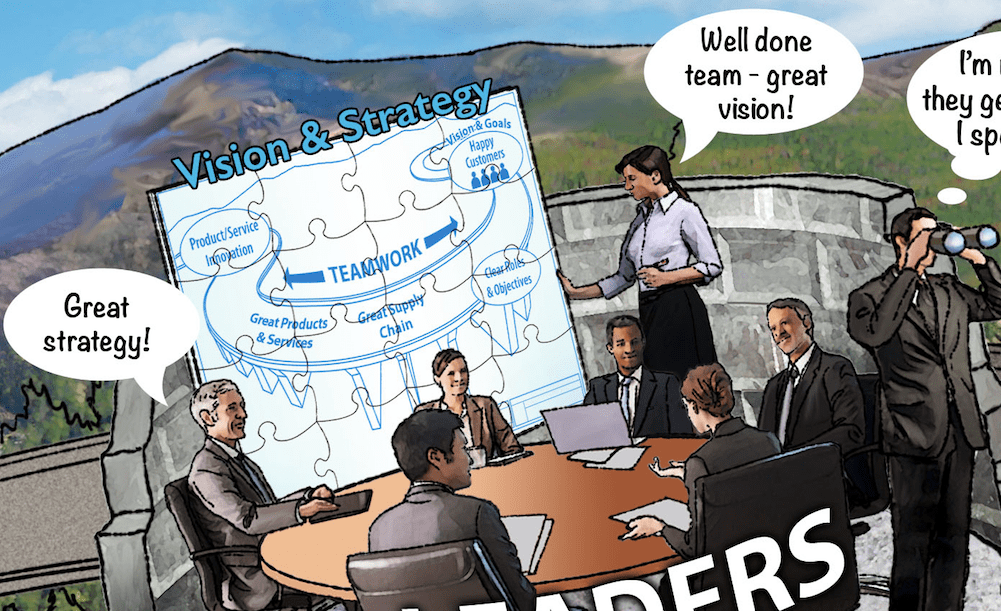Transformational change success
Transformational change in business doesn’t happen by accident. It requires planning, good implementation, and follow up, among other things. What specific actions, however, make transformational change a success?
This question was explored in research conducted by McKinsey Global. Firstly, it found that only a quarter of the executives surveyed believe transformations they’ve been involved in were successful. The surveyors defined success as improving performance now and in the future.
The survey delved further into discovering what worked and what didn’t. It was based on responses from 1,946 executives working in a range of industries and in companies of varying size.
Five stages of transformational change
The researchers first laid out the five stages of transformation:
Stage 1 – Setting performance and wider organisational goals
Stage 2 – Assessing the capabilities of the organisation
Stage 3 – Designing the initiatives that will complete the transformation
Stage 4 – Executing the initiatives
Stage 5 – Sustaining the initiatives and the changes achieved
The researchers then outlined 24 actions that are required to complete the five stages of transformation change. These actions are the basis of the survey.
The research found that when companies implement the five stages of transformational change and complete the 24 actions they entail, the business transformation success rate jumps to 58 percent, more than double the average rate of success.
What about the 24 actions? Which have the most impact on transformational change success?
The researchers found it is more important to complete as many actions as possible, but a few did stand out as being critical to success. These were:
- Effectively communicating
- Actively leading
- Empowering employees
- Establishing and maintaining a culture of ongoing improvement
Communicating openly and effectively
According to the research, good communication can’t deliver a successful transformational change on its own. However, it is the action most closely linked to success. In fact, where good communication takes place, successful transformations are eight times more likely.
The most important types of communication were:
- Describing the implication of the upcoming changes for individuals– 35 percent of respondents said this was important in successful transformations they have been involved in.
- Giving information on the progress and success of the transformation– 32 percent of respondents said this was important.
- Communicating a change story– 30 percent of respondents said this was important.
The importance of communication aligns closely with our experience at The Big Picture People. We recently worked with a major provider of outsourced public services who were implementing a major change programme. After helping them to communicate their change story to over 1000 employees, almost 90 percent of those who took part confirmed that they now realised there were more things they can positively influence in their working environment than they had previously thought. This was critical to an increased sense of ownership and empowerment of managers and staff to accept and drive transformational change in the future.

Leadership and successful transformational change
The research also found that effective, active, and participatory leadership is crucial to successful transformational change.
In fact, personally role modelling the behaviour changes being implemented was important to 32 percent of the survey respondents who had experience of successful transformational change. In addition, 30 percent said it was important for senior leaders in the organisation to spend at least half their time working on the transformational change rather than delegating the responsibility to others.
Importantly, the researchers also identified a perception gap between company leaders and others in the organisation who were affected by the transformation but did not play an active role in it. The latter group is described as direct observers in the survey.
For example, 38 percent fewer direct observers said they agree that senior leaders were role models for change. When it comes to communication, the perception gap between what leaders believe they achieved and what direct observers believe is even greater – 43 percent.
At The Big Picture People, the leader-led approach to communicating change messages helps to foster trust, authenticity and the builds the credibility of those leading the change. A recent project for a major baby and toddler feeding product manufacturer using this leader-led communication approach led to 95 percent of employees reporting strong pride in the company despite a significant transformational change agenda.
Empowering the right people
The various roles that employees play in transformational change is crucial to success. According to the executives involved in the survey, it is also important to assign the right people (i.e. those who support the transformation) and to hold individuals accountable for their contribution.
In addition, respondents also highlighted the importance of clearly defining responsibilities and ensuring enough people are involved in the transformation.
Sustaining success and preventing slippage
The fifth stage of transformational change according to the survey is taking actions to support continuous improvement in the business. Forty percent of respondents to the survey said they wish they had spent more time on this stage of the process.
The specific actions that executives believe are important to transformation success include:
- Ensuring everyone is involved in identifying problems
- Ensuring everyone understands how their job fits in with the vision of the company
- Helping individuals improve their performance
- Sharing and improving best practices across the organisation
- Ensuring everyone engages with their individual targets and goals
The Overall Message
While not a roadmap, the survey does clearly show what executives believe to be important to successfully implement transformational change. It also highlights things they would do differently in the future. The two most cited were more effectively communicating a change story (49 percent of leaders said this) and ensuring the top team is aligned with the company’s transformational change goals (47 percent of leaders said this).
This aligns with the overall message of the survey results – improving communication, effectively leading, and empowering (the right) people are crucial to transformational change success.
At The Big Picture People, we have a proven and award-winning approach for communicating transformational change to employees and getting them fully up to speed with their organisation’s vision, values and priorities.
Get in touch with us to find out how you can apply our big picture learning approach to your organisation.







